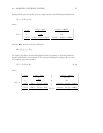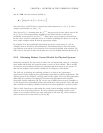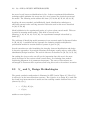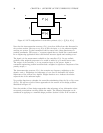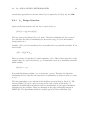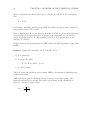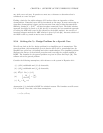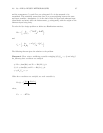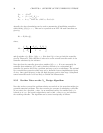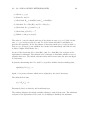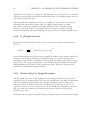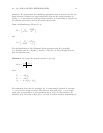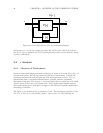2.3. H
∞
AND H
2
DESIGN METHODOLOGIES 35
Choose γ>0 and form the following Hamiltonian matrix,
H =
Aγ
−2
BB
T
−C
T
C −A
T
.
The following lemma gives a means of checking whether or not P(s)
∞
<γ.Aproofof
this lemma is given in DGKF although it is based on the work of Anderson [60],
Willems [61] and Boyd et al.[62].
Lemma 2 The following conditions are equivalent:
a) P(s)
∞
<γ;
b) H has no eigenvalues on the ω axis;
c) H ∈ dom(Ric);
d) H ∈ dom(Ric) and Ric(H) ≥ 0 (if (C,A) is observable then Ric(H) > 0).
As the above illustrates, AREs play a role in both stabilization and H
∞
-norm
calculations for state-space systems. Before giving more detail on the H
∞
design
problem (Section 2.3.4), we will discuss some of the issues that arise in the practical
calculation of ARE solutions.
We can summarize an ARE solution method as follows:
(i) Form the Hamiltonian, H.
(ii)CheckthatHhas no ω axis eigenvalues.
(iii) Find a basis for the stable subspace of H.
(iv)CheckthatX
1
is invertible.
(v) Form X = X
2
X
−1
1
.
The first issue to note is that it is difficult to numerically determine whether or not H
has ω axis eigenvalues. A numerical calculation of the eigenvalues is unlikely to give



